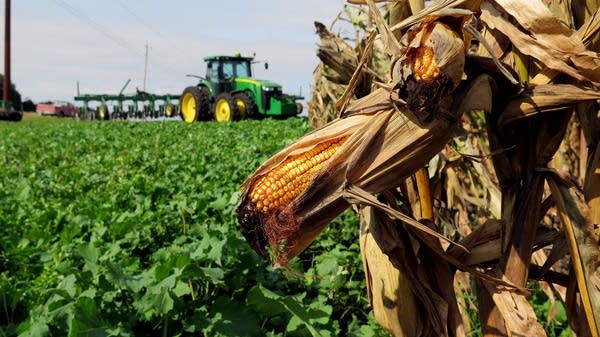Financial worries grow as Minnesota farmers prep for spring

An ear of corn nearly ready to be harvested hangs on a stalk next to an area overgrown by cover crops at Joel Rauenhorst's farm in Easton, Minn., in September 2018.
Elizabeth Dunbar | MPR News
Go Deeper.
Create an account or log in to save stories.
Like this?
Thanks for liking this story! We have added it to a list of your favorite stories.


